Crime
Woman dropped down manhole
Welcome to America!
Modesto Bee - July 2, 1972
Posted By: Alex - Mon Jun 17, 2024 -
Comments (0)
Category: Crime, 1970s
Follies of the Madmen #590
Posted By: Paul - Mon Mar 18, 2024 -
Comments (1)
Category: Crime, Hygiene, Advertising, 1980s, Europe
Ghost Evidence
Read the whole story here.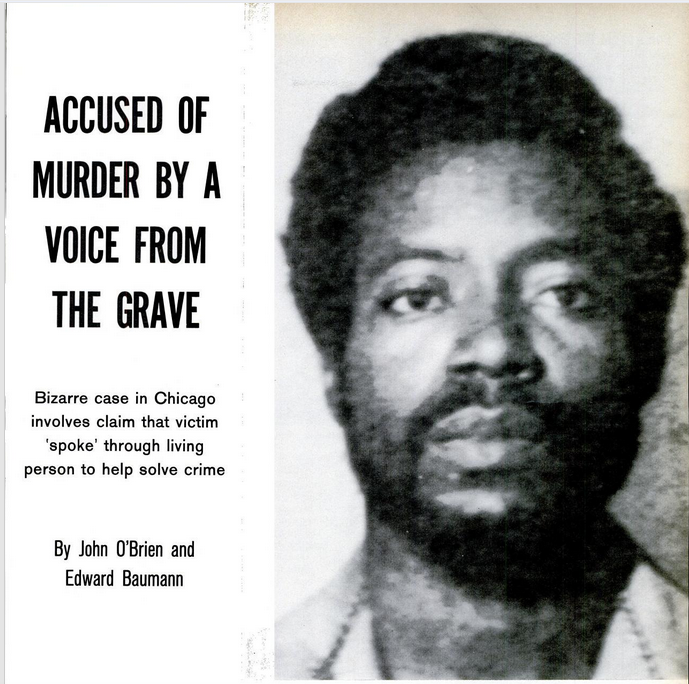

Posted By: Paul - Tue Mar 12, 2024 -
Comments (0)
Category: Crime, Death, Supernatural, Occult, Paranormal, 1970s
The Highwaymen, “The Bird Man”
For our category of Actors Who Unwisely Attempt "Singing"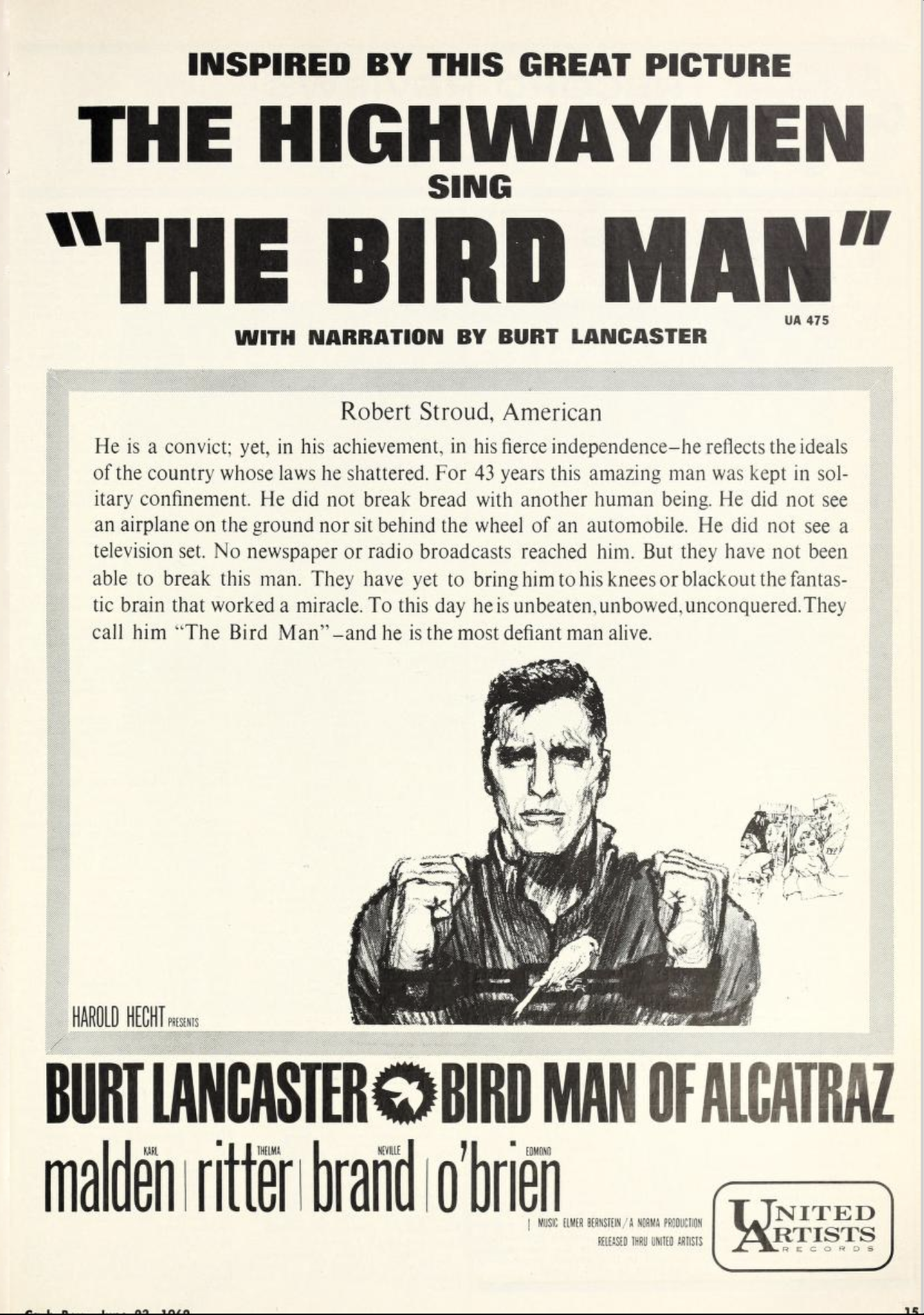
Posted By: Paul - Tue Jan 30, 2024 -
Comments (1)
Category: Animals, Crime, Movies, Music, 1960s
The Murder of Vivian Gordon As Explained by Mystery Writers

You can read the true crime story details at The Smithsonian Magazine site. But for the explanations from fiction writers, see below. I think police in 2024 should adopt this tactic. "So, Stephen King, how would you solve the Isabella Stewart Gardner Museum theft?"

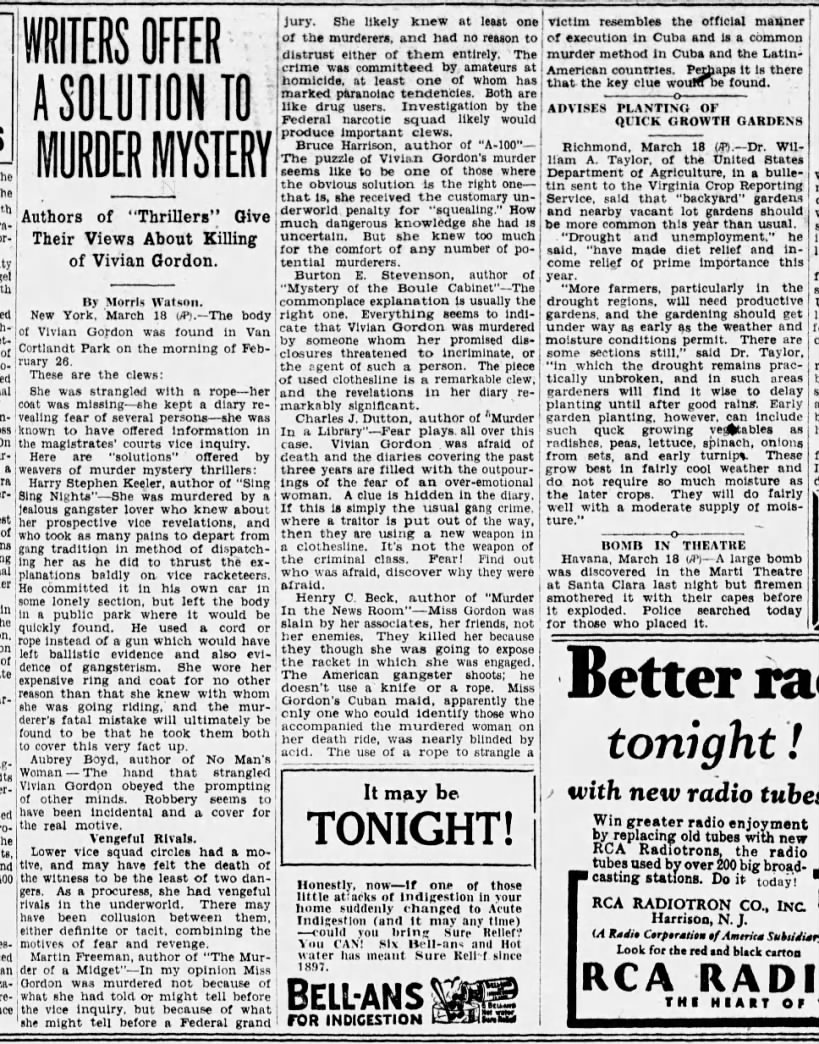
Posted By: Paul - Fri Jan 05, 2024 -
Comments (0)
Category: Amateurs and Fans, Crime, Writers, 1930s
Attacked by rogue Brownies
A few translations may be necessary:Brownies: the British equivalent of girl scouts
The gods: "a theatrical term referring to the highest areas of a theatre such as the upper balconies"
Also, I'm puzzled by Gladys Long's comment that, "The trouble is when children are in uniform they are more noticeable than others who are not."
Wasn't the problem that the girls were violent, not that they were "more noticeable"?

Bristol Evening Post - Feb 1, 1978
Posted By: Alex - Wed Oct 25, 2023 -
Comments (5)
Category: Crime, Theater and Stage, Junk Food, 1970s
Honeymoon attack
Aug 1993: Frannie Snite was convicted of sneaking up behind her new husband as he sat watching the sunset during their honeymoon, then attacking him with a tire iron. Apparently she was hoping to get a life insurance payout. That's gotta be in the running for the worst honeymoon ever.And yet, it seems like there must be more to the story. I don't think her husband (who survived the attack) ever identified her as his attacker. Her 2013 obituary doesn't mention any of this, nor her five-year prison sentence.
More info: Seattle Times
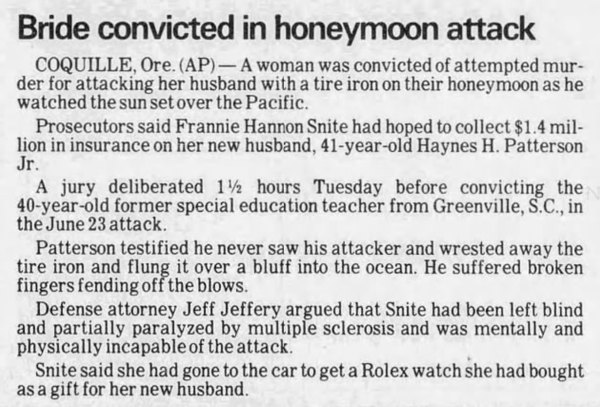
Lancaster New Era - Aug 18, 1993
Posted By: Alex - Sat Sep 09, 2023 -
Comments (1)
Category: Crime, Wives, Marriage, 1990s
Bank Robber Immobilizing Vestibule
So near as I can interpret this patent, in front of every bank teller's window is erected a revolving-door chamber. The customer--or robber--must enter the chamber, which revolves shut behind him. A good customer is allowed by the clerk's pressing of a switch to exit. The robber is held in place. What could go wrong?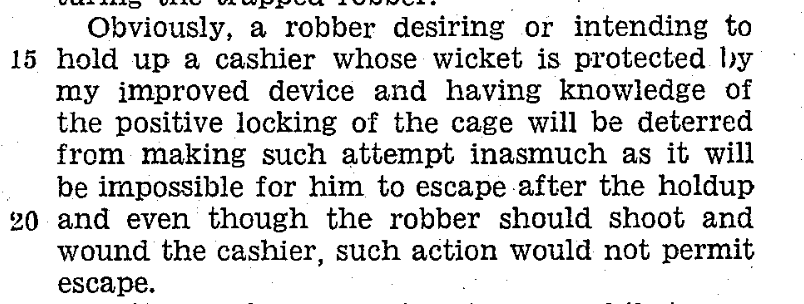
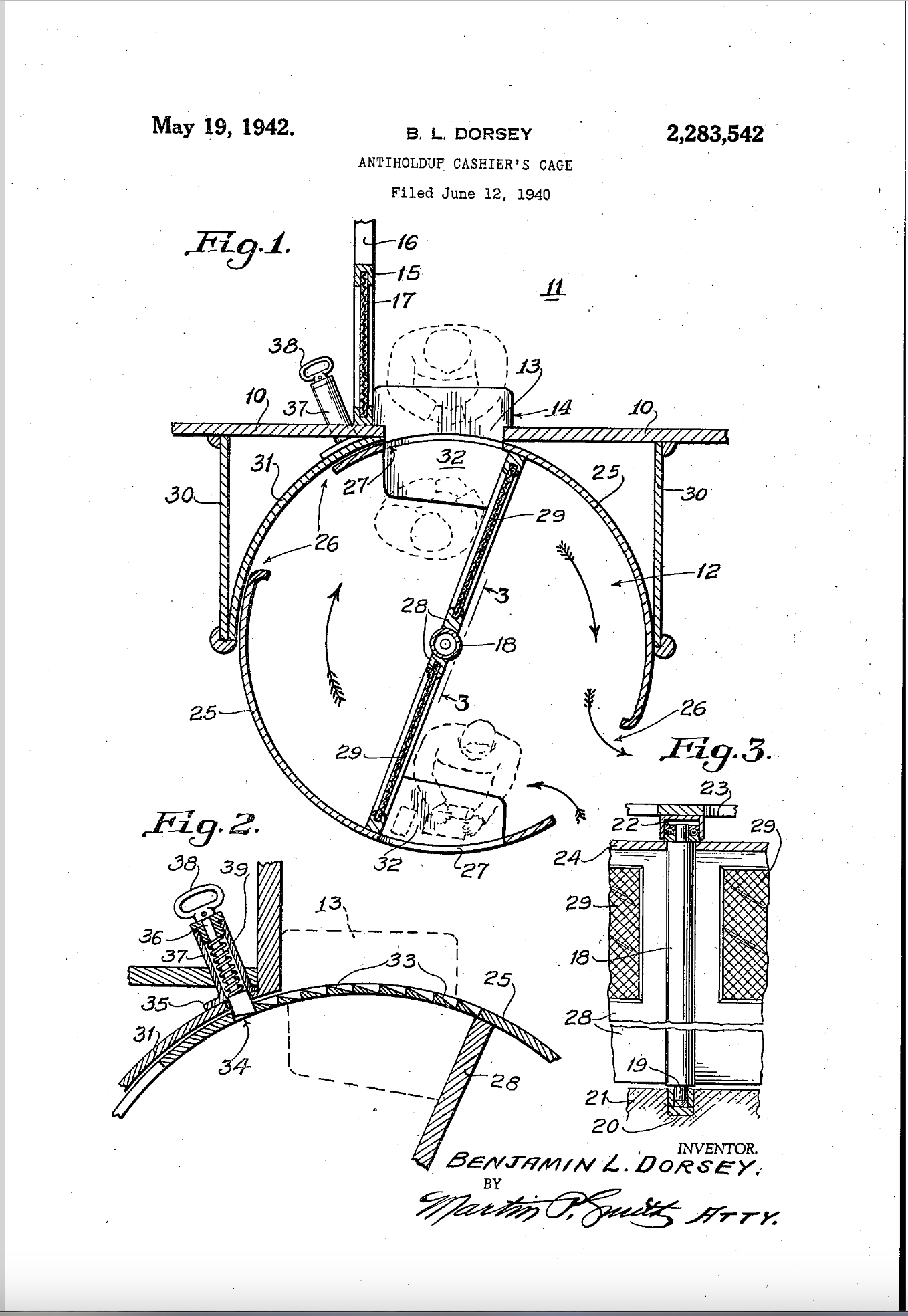
Posted By: Paul - Thu Aug 17, 2023 -
Comments (1)
Category: Crime, Inventions, Patents, Money, Innocent Bystanders, Passersby, Witnesses and Accidental Victims, 1940s
Dolphin Lair’s anti-smoking campaign
Dec 6, 1976: 21-year-old Dolphin Lair held a hostage at gunpoint for several hours on top of a building in Los Angeles until police agreed to his demand that local radio stations broadcast his anti-smoking message. The message read, in part, "I want my Congress to put a bill before the law that all cigarettes that contain nicotine and tar should clearly explain what the ingredients mean." Once the message was broadcast, Lair surrendered.Lair's father had recently died of lung cancer. He later explained that when he had first tried to get the media to broadcast his message, "They told me it wasn't newsworthy. So I planned this... and it was newsworthy."
He was eventually convicted of felony false imprisonment and sentenced to a year in county jail.
More info: NY Times
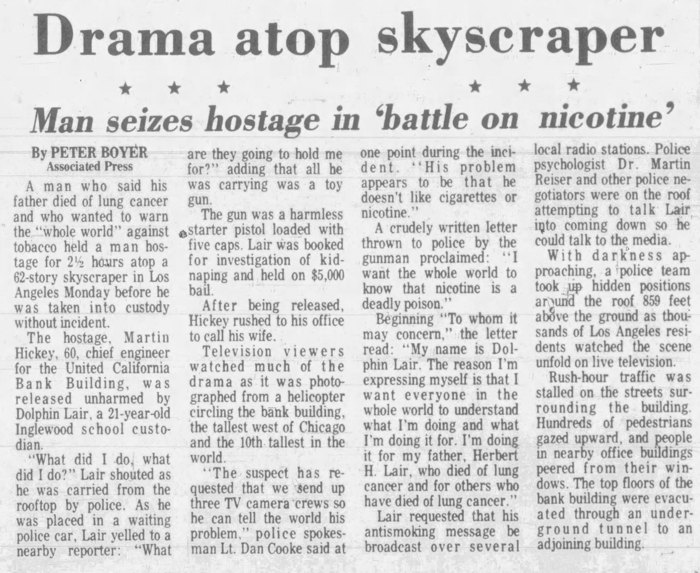
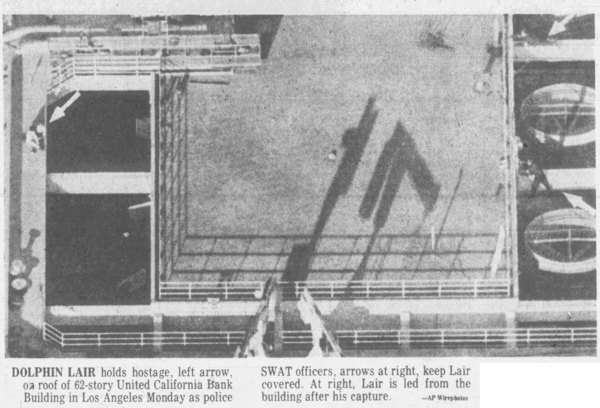
Long Beach Independent - Dec 7, 1976
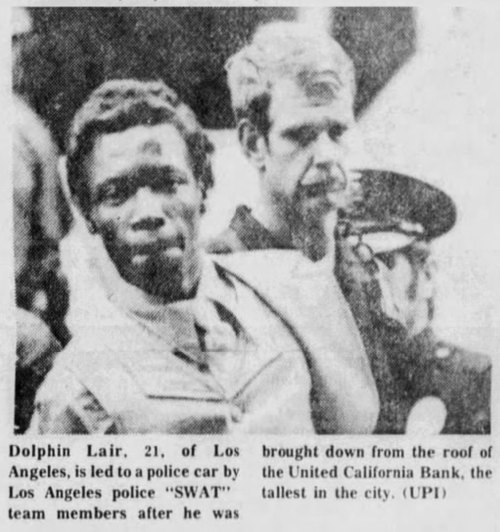
Coshocton Tribune - Dec 7, 1976
Posted By: Alex - Tue Aug 08, 2023 -
Comments (3)
Category: Crime, Smoking and Tobacco, 1970s
The Birdseed Bandit
Jan 1976: Miklos Petrovics held up a Bank of America branch in Los Angeles, but instead of asking for money he demanded a truckload of birdseed. He also, "demanded the bank landscape its grounds and filter the building's air-conditioning system to fight air pollution that he said was killing his birds." Finally, "he also wanted the people of Los Angeles to 'join hands and march to the ocean to be cleaned.'"After 90 minutes he surrendered to the police. He later pleaded guilty to a felony charge of brandishing a weapon and was sentenced to six months in jail and six months probation.
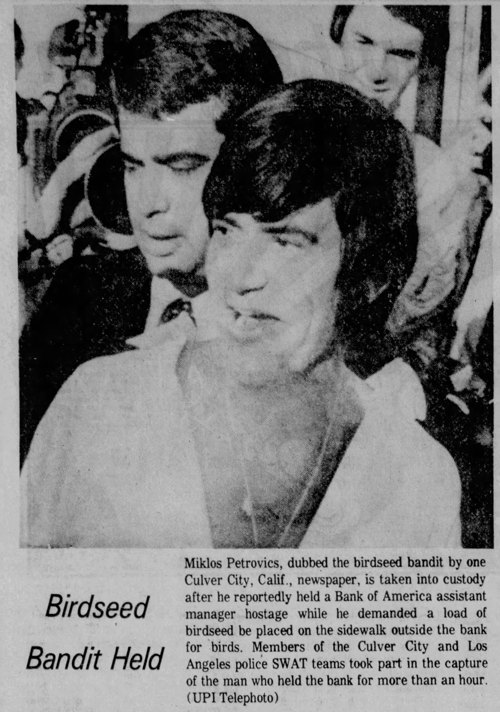
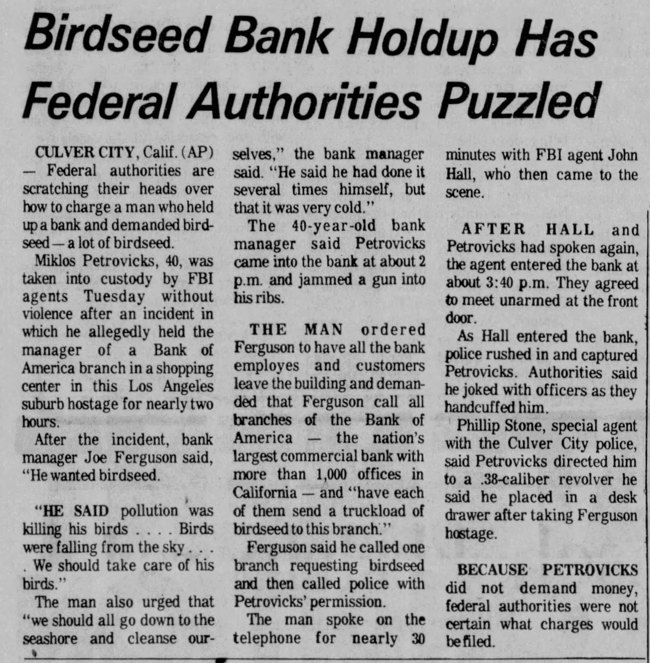
Shreveport Journal - Jan 7, 1976
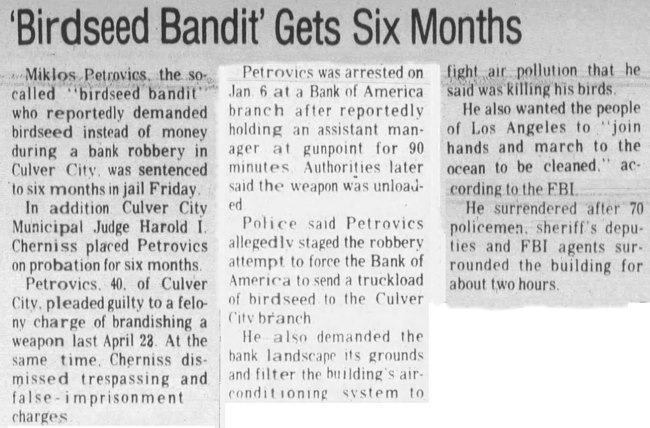
Venice Marina News - May 6, 1976
Posted By: Alex - Fri Aug 04, 2023 -
Comments (2)
Category: Crime, 1970s

| Who We Are |
|---|
| Alex Boese Alex is the creator and curator of the Museum of Hoaxes. He's also the author of various weird, non-fiction, science-themed books such as Elephants on Acid and Psychedelic Apes. Paul Di Filippo Paul has been paid to put weird ideas into fictional form for over thirty years, in his career as a noted science fiction writer. He has recently begun blogging on many curious topics with three fellow writers at The Inferior 4+1. Contact Us |




